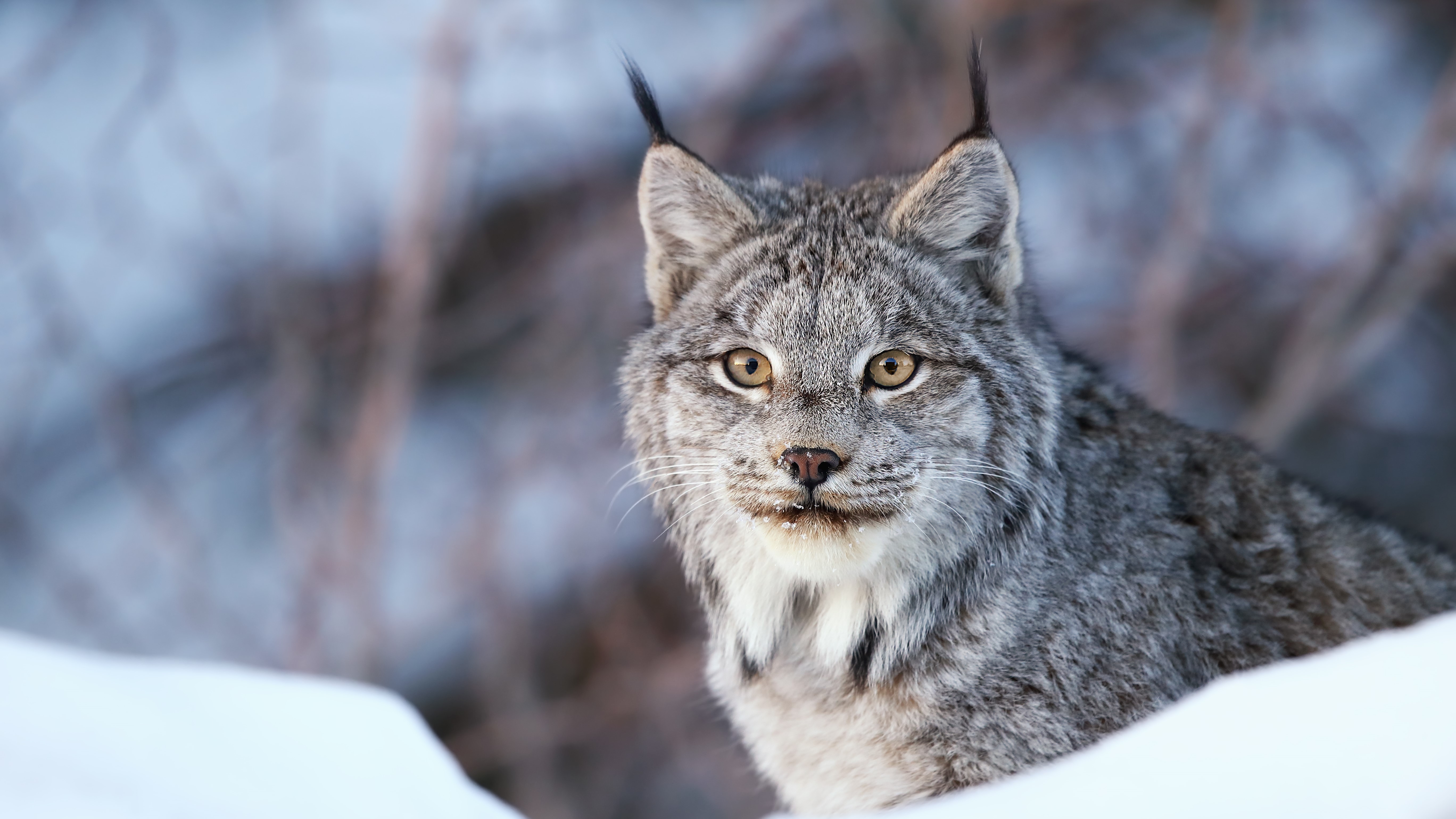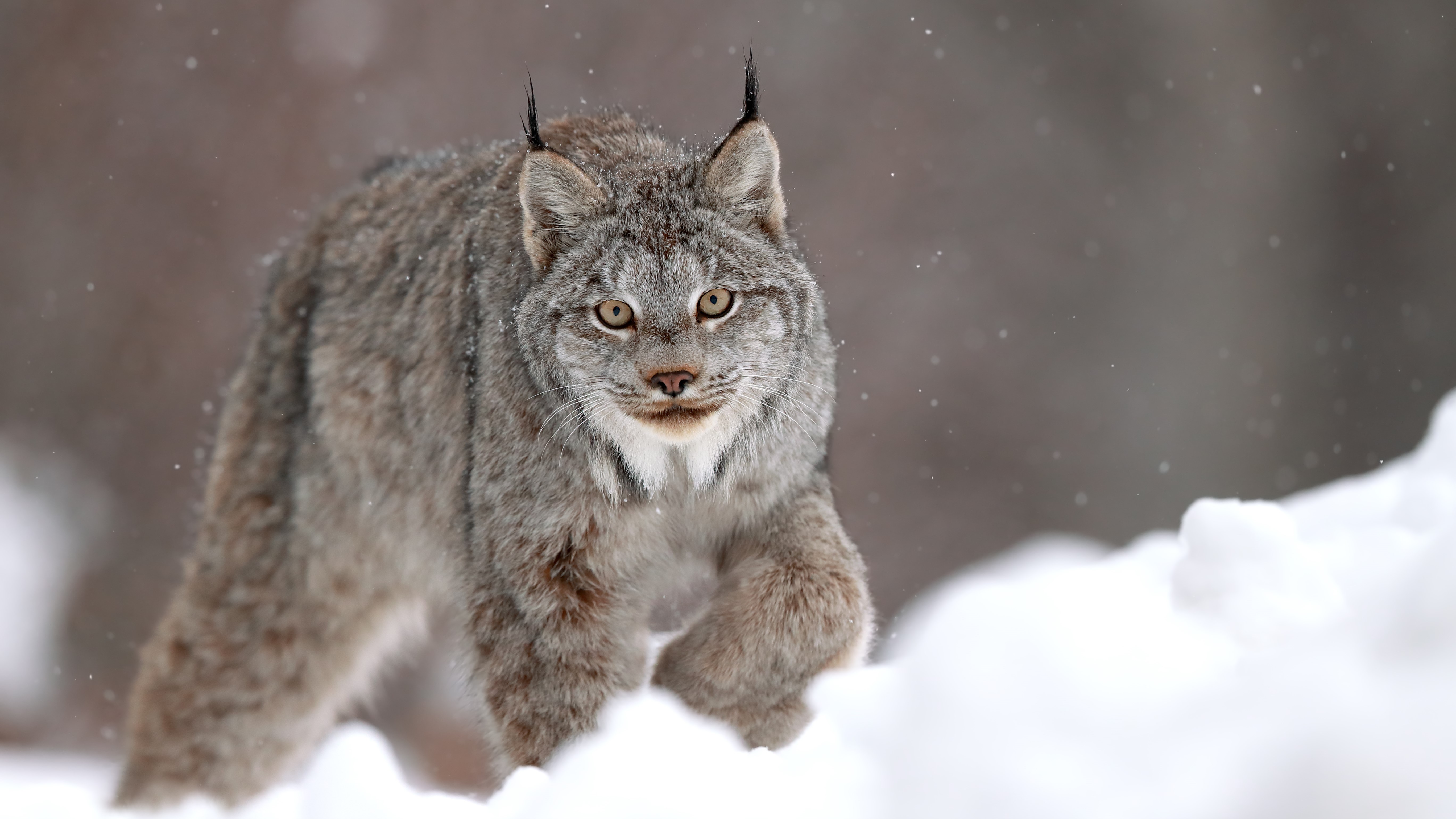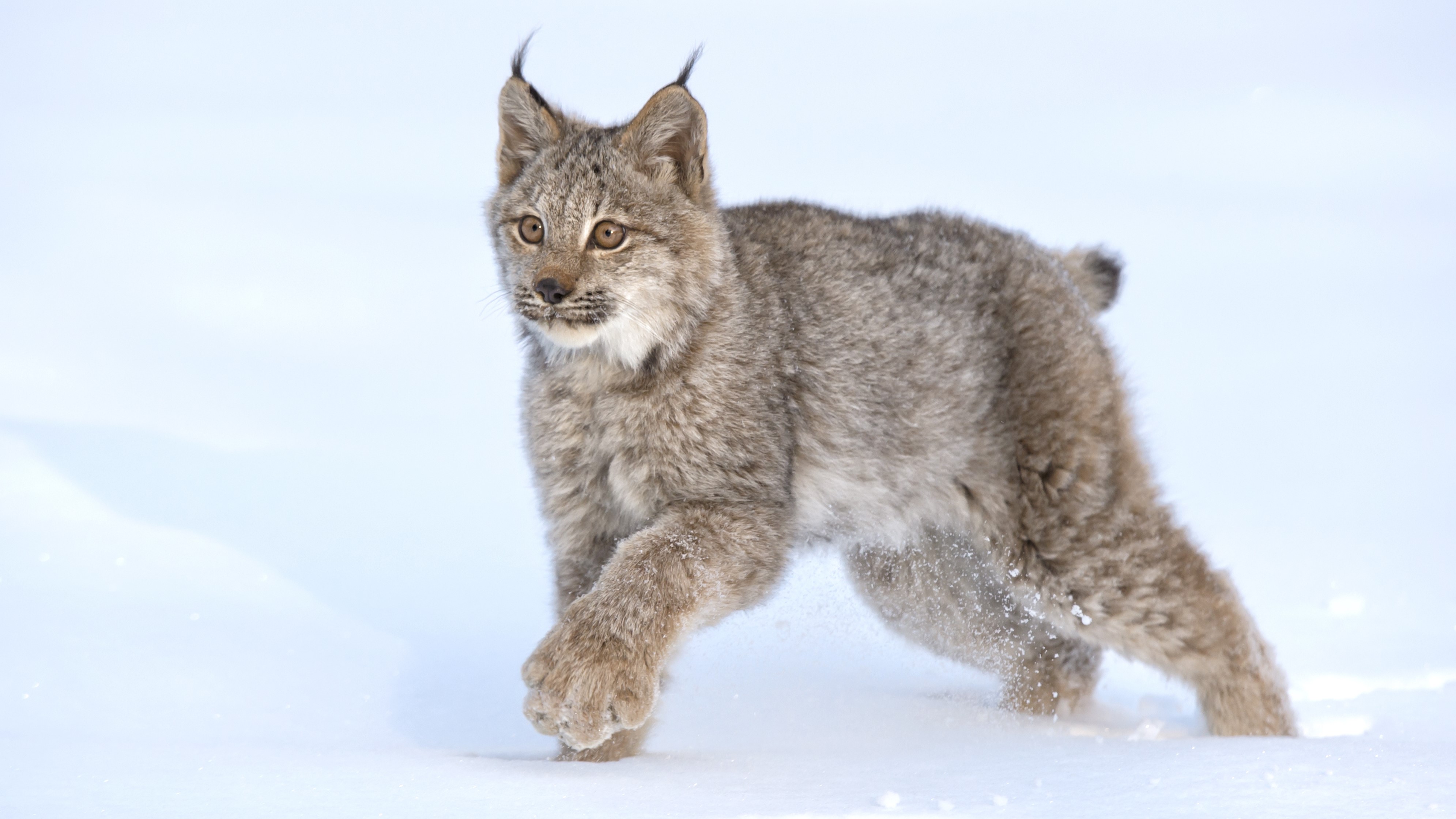
Hiking in the northern states and Canada can be an opportunity to get your eyes on some truly awe-inspiring wildlife, from giant bovines and hulking Ursidae to big prowling, purring cats. Almost all of these animals aren’t nearly as interested in us as we are in them, so seeing any animal like a bear or wild cat can be pretty exciting – but it can also be scary, especially if you don’t know exactly what you’re looking at, or whether it poses a threat to you.
A healthy amount of fear can be a good thing when it comes to wildlife safety, as hopefully it cuts down on the amount of tourists posing for photos with alligators, but sometimes too much fear can endanger animals. One beautiful animal that’s often misunderstood is the Canada lynx, an evasive furball that pads around on the prowl in northern climes. If you’ve seen such an animal when winter hiking in the north, read on for everything you need to know about this amazing creature.

What is a Canada lynx?
The Canada lynx is a mid-sized wildcat that predominantly dwells in dense borealis forest and makes up one of four species in the lynx family, alongside its cousin, the bobcat. With long black tufts on their triangular ears and black tips on their bobbed tails, this distinctive cat typically stands about 20 inches tall at the shoulder, ranges from about 29 to 43 inches long and can weigh up to 24 lbs – about twice the weight of a house cat.
During the colder months, the Canada lynx sports a thick, gray coat that turns thinner and light brown in summer. Tufts of fur that grow out of their cheeks make their faces appear wide. Their large paws act like natural snowshoes, allowing them to tiptoe around the powder looking for prey, which they do at night. When they set their sights on a tasty-looking snowshoe hare – their primary food source – they’re not sprinters so they must lie in wait and pounce at the right time.
Because they’re so dependent on snowshoe hare for survival, the population density of the two species is closely correlated. When snowshoe hares aren’t available, they’ll also feed on small mammals and birds, though have been known to also eat large mammals like caribou, according to Canadian Geographic.

Where can you find Canada lynx?
Canada lynx is distributed across much of Canada and Alaska but you can also find them in smaller populations in the US. According to the National Wildlife Federation, the presence of stable lynx populations has been confirmed in Maine, Montana, Washington and Colorado, where no more than about 200 of them are thought to live.
The nocturnal Canada lynx is an extremely elusive species. Not only do they shy away from humans everywhere, their population has been threatened by habitat destruction and competition with coyotes, especially in the US and southeastern Canada. Reintroduction measures have been in place in parts of the US over the decades, and they have been listed as threatened in the lower 48 under the Endangered Species Act since 2000. So while Canada lynx can be found in many parts of North America, to come across one on your travels would be very rare and special indeed.

Are Canadian lynx aggressive?
Many North American hikers can be fearful of wildlife, and with grizzly bears, wolves, mountain lions and alligators on the trail, it’s not necessarily that surprising. However, much like their bobcat cousins, you’re extremely unlikely to encounter a Canada lynx on the trail and you probably have nothing to fear if you do as they are not human predators or naturally aggressive.
Though Canada lynx will stalk and kill animals for food and in self-defense against other animals, they’re most likely to give you a wide berth unless you’re trying to corner them for a photograph, getting too close to their young or they are sick.
That said, just like with a bobcat, if you are lucky enough to see a Canada lynx while you’re out snowshoeing, take care to secure your pets and children and practice the following precautions:
- Don't approach it. Respect all wildlife by keeping your distance. Remember, you're a guest in their house, not the other way around.
- Don't try to feed it.
- Don’t turn your back on the lynx. Keep facing it and back away slowly and deliberately to make space between you.
- Don’t run as it may provoke the lynx into instinctively pursuing you.
- If the lynx is acting aggressively towards you, start making a lot of noise. Use your voice, bear bells, beat your trekking pole against a tree, blow your hiking whistle – basically whatever you have at your disposal.







